This post and the photos within it may contain affiliate links. If you purchase something through the link, I may receive a commission at no extra charge to you.
MILD is a lucid dreaming technique, also known as Mnemonic Induction of Lucid Dreams.
It is a powerful way that can teach you how to become aware that you are dreaming, and to control your dreams, even though dream control strongly depends on how developed is your skill.
Yet, anyone who commits to the MILD technique can learn how to experience this fantastic state.
Keep reading to find out how to use MILD technique for lucid dreaming. In this article, you will learn about:
- MILD technique: Who invented Mnemonic Induction of Lucid Dreams?
- Is MILD technique proven to work?
- How does MILD technique works?
- MILD technique: Step-by-step lucid dreaming guide
- Additional tip: Adding a pairing technique from a recent study

1. MILD technique: Who invented Mnemonic Induction of Lucid Dreams?
MILD technique was created by the American psychophysiologist Stephen LaBerge.
He is specializing in the scientific study of lucid dreaming, and he developed the technique to enable himself and other researchers to enter a lucid dream state.
Stephen LaBerge did plenty of experiments, and in the end, the MILD technique was proven to work.
It is very practical and ideal for beginners.
Additionally, Stephen LaBerge is one of the authors of a famous lucid dream book, called Exploring the World of Lucid Dreaming.
If you are curious, you can see my review of the book here.
2. Is MILD technique proven to work?
Yes, the MILD technique was proven to work for most people, in just 14 days.
Mnemonic Induction of Lucid Dreams is based on the ability to remember and perform future actions (i.e., prospective memory). It works best after a spontaneous awakening with dream recall.¹
A great benefit is that the technique quite simple – it is aimed at beginners, and you should not have any special skills to perform it.
Yet, it is important to remember that you should give it a try at least 2-3 weeks.
In the actual study, which you can find below, the people were writing their dreams in dream journals for one week. Then, in the second week, the participants were performing the method.
They got great lucid dreaming results in just two weeks of trying.
“Mnemonic” is a term that is in connection with any learning activity that assists in remembering something.
The MILD technique will help you to increase your self-awareness, making it easier to recognize when you are dreaming.
Additionally, the technique will help yo to “plant” in your unconscious mind the intention of having a lucid dream and recognizing it when you have it.
3. How does it work?
In the newest study, that was done in Australia, at the University of Adelaide, Dr. Denholm Aspy tried to combine the MILD technique with some additional methods, aiming better results.
The two main parts of the MILD technique are number 3 and 4 below. The first 2 parts are essential for every other lucid dream induction technique.
So, part 1 and 2 are additional procedures. They are recommended and they will simply increase your chances of inducing lucid dreaming.
The best way to perform the MILD technique is:
Part 1: Remembering your dreams (Dream Recall)
Part 2: Reality Checks
Part 3: Lucid Affirmations
Part 4: Visualize Your Dream
Furthermore, the added technique from the study was:
– Wake-Back-to-Bed (WBTB)
4. MILD technique:
Step-by-step lucid dreaming guide
Part 1: Dream Recall
This is an essential step for lucid dreaming. It goes with EACH method that you decide to try, but especially for MILD – it is really important.
WHAT SHOULD YOU DO?
Simply write down your dreams in a dream journal every morning!
Don’t worry if at the beginning you cannot remember them very well, that simply means that they are not vivid.
If you make the dream diary a habit and if you write every morning – your dream recall will improve drastically within weeks.
The key here is being consistent and patient!
However, if you have real trouble with remembering any of your dreams, or if you want to improve your dream recall faster, check:
Below you can see my dream journal as well as some examples of cool dream journals that you can use.

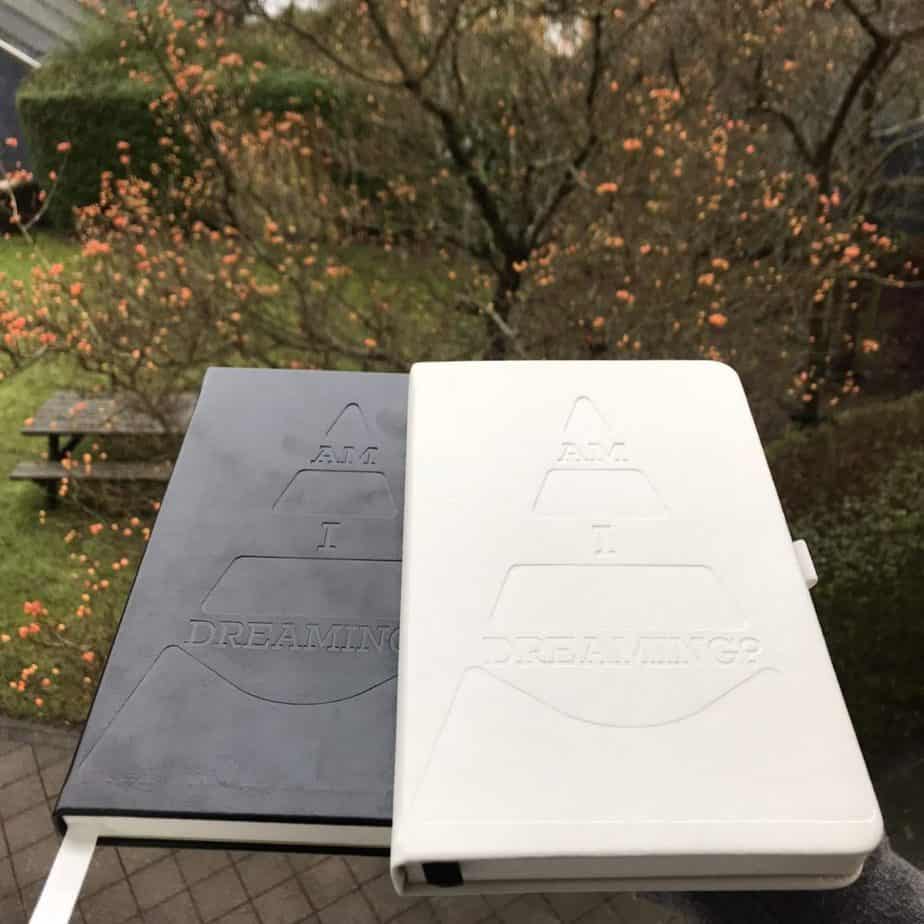
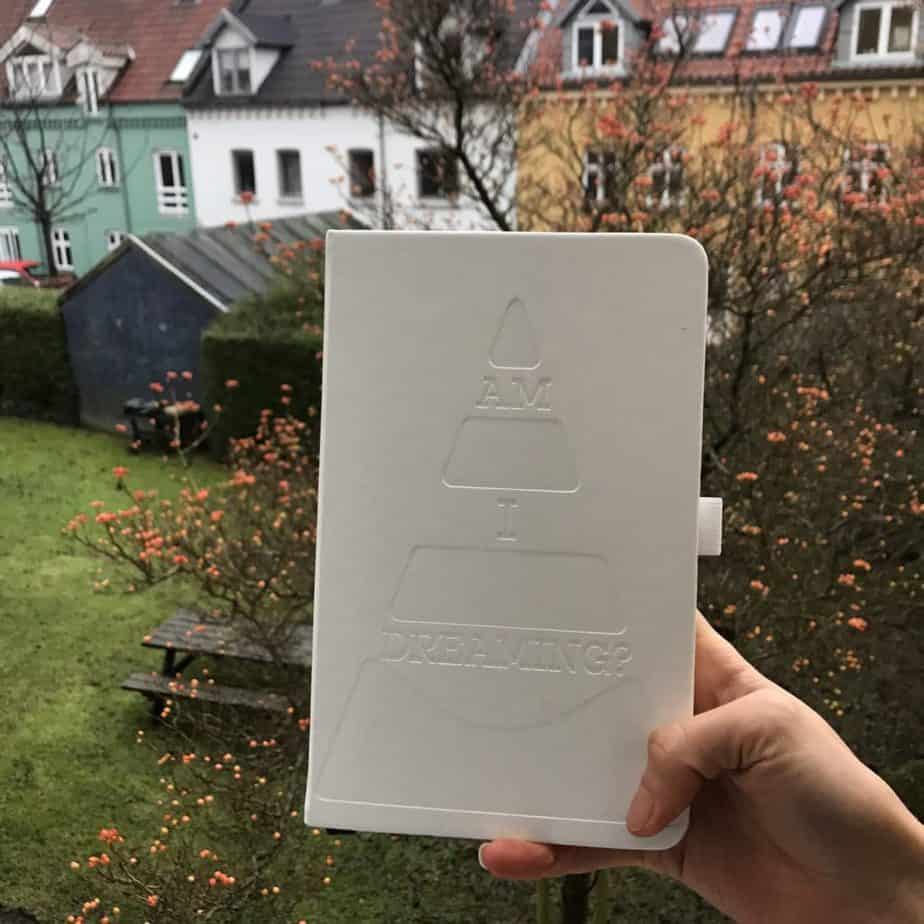
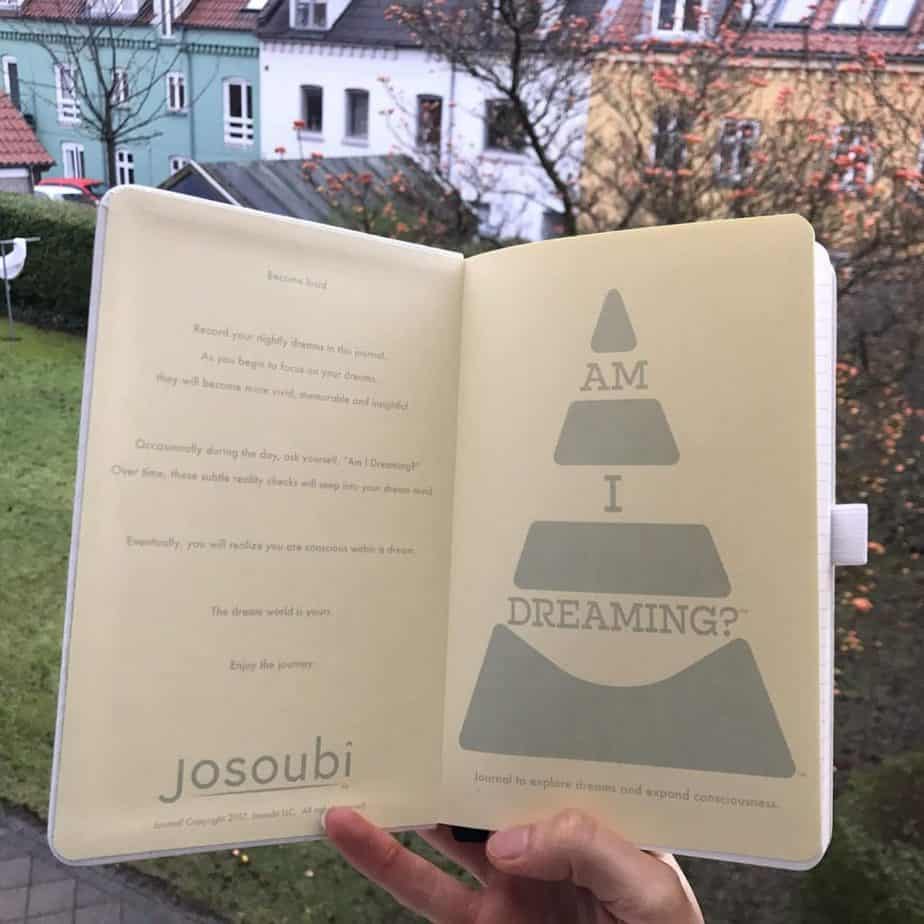
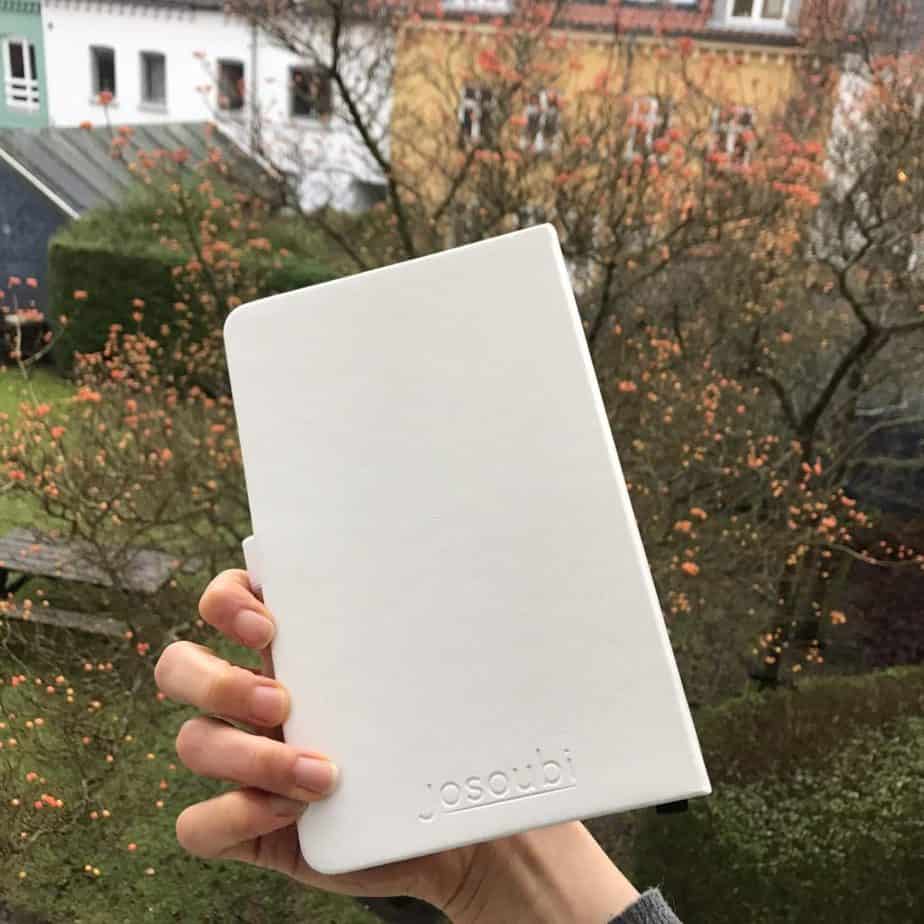
Part 2: Reality Checks
Reality check is a simple action, that will help you to tell the if you are in a dream or in the real world.
By doing reality checks regularly, they will start showing up inside your dreams. Then, when that happens, you will be able to notice that you are dreaming (which will trigger lucidity!).
Additionally, simply asking yourself “Am I dreaming?” is a really good way to focus for a short period on the environment around you.
Is it weirder than usual? Is it too calm? Were the walls of the room THIS color? 😀
Ask yourself similar questions throughout the day.
It may sound weird, but believe me, its working and it can help a lot.
WHAT SHOULD YOU DO?
Find the reality check you like the most and do it a few times throughout your day!
You can also check my FULL guide – How to do reality checks properly.

Reality check ideas:
1) Try to push one finger through your palm – this one is super fun 😀 or just look at your hand! You might be surprised when you see that you have one additional finger?!
2) Try to read something – Not with everyone, but usually reading while we dream is a very hard task.
You will be able to see immediately if you are dreaming, just by looking at writing on a paper or a book – if it’s shifting around, and if it is blurry, then you will be sure that you are dreaming.
3) Look at your ring or your bracelet (if you have one) – Simply, use it as a reminder. So, when you look at it, remember to do a reality check!
The trick is that in a dream things are different, unusual, and sometimes weird.
For instance, if you use a bracelet as your reminder, most likely in your dream this object is going to be a different color, it might look in a strange way, etc.
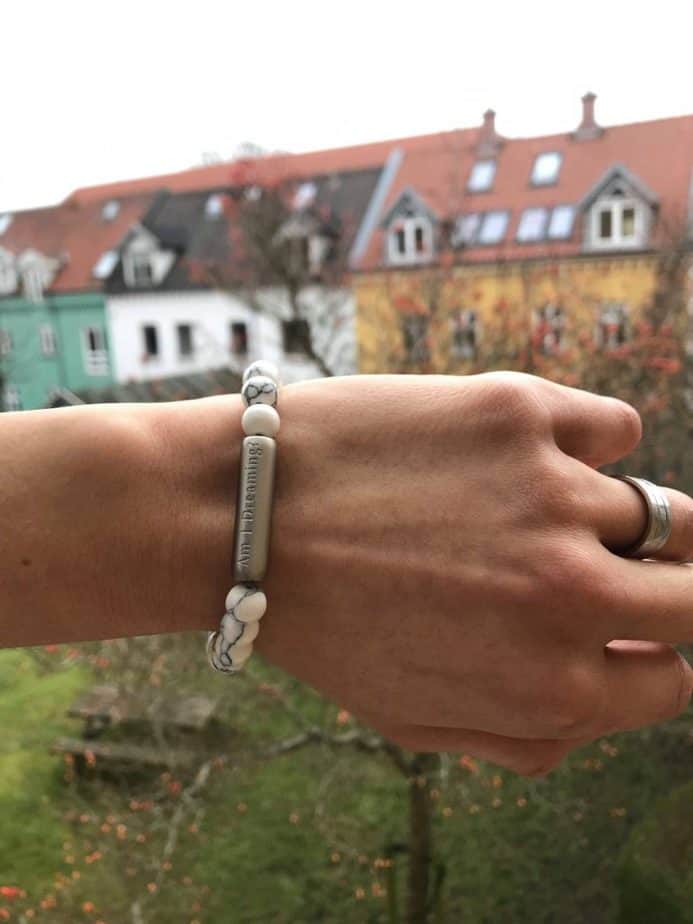
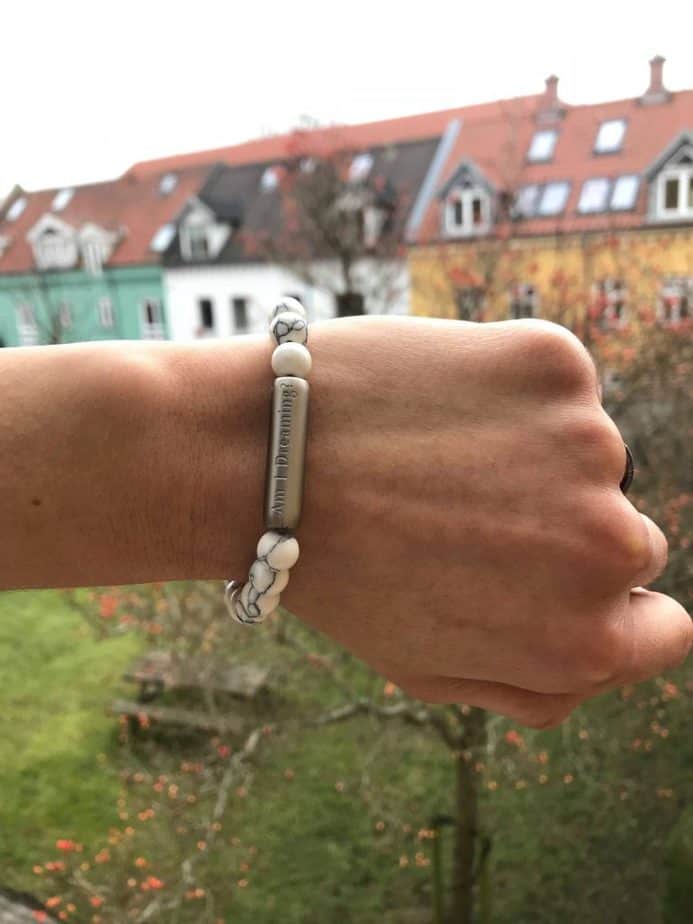
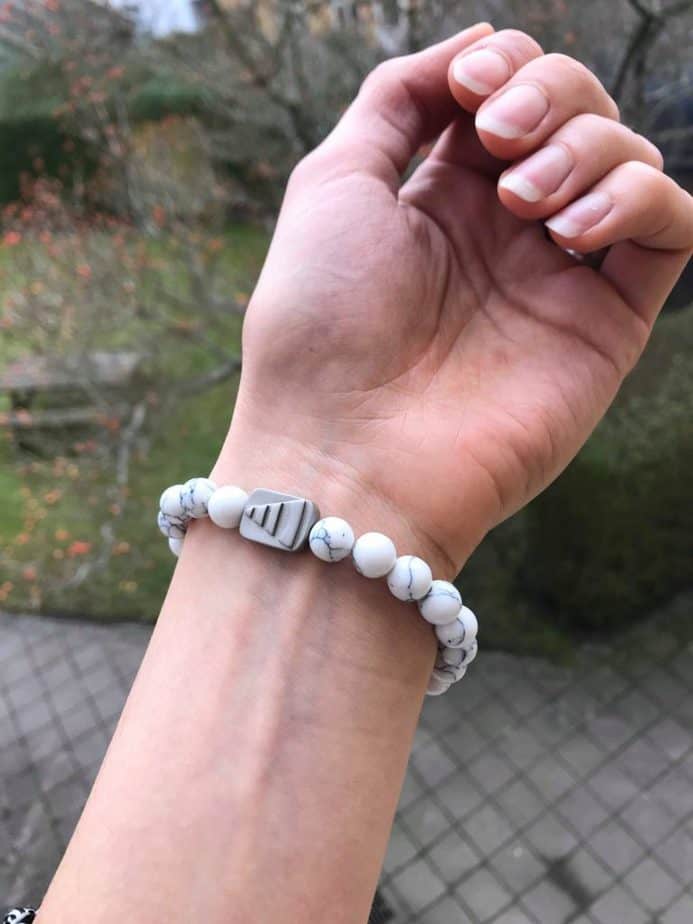
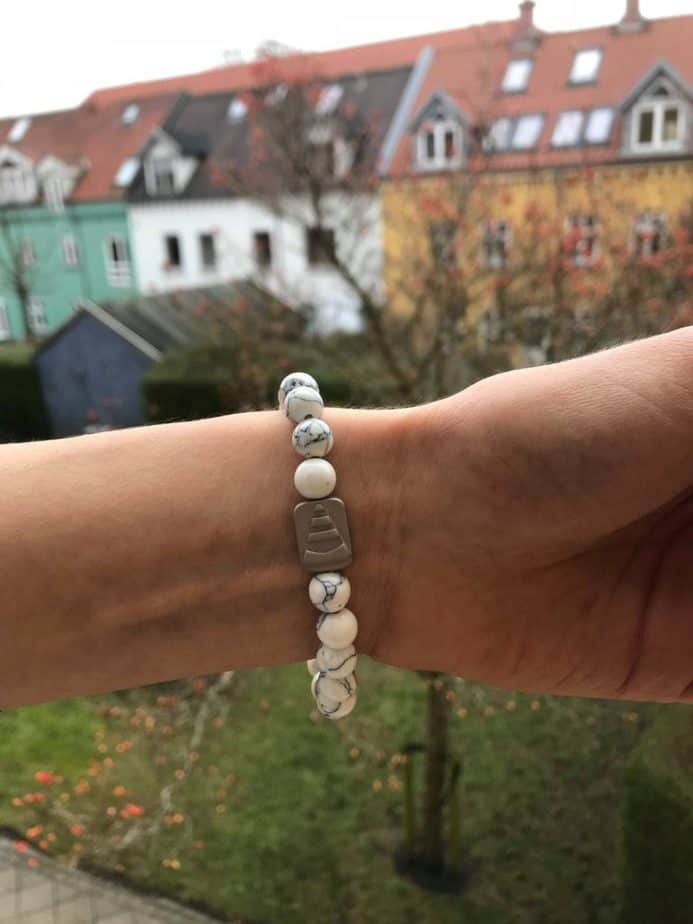
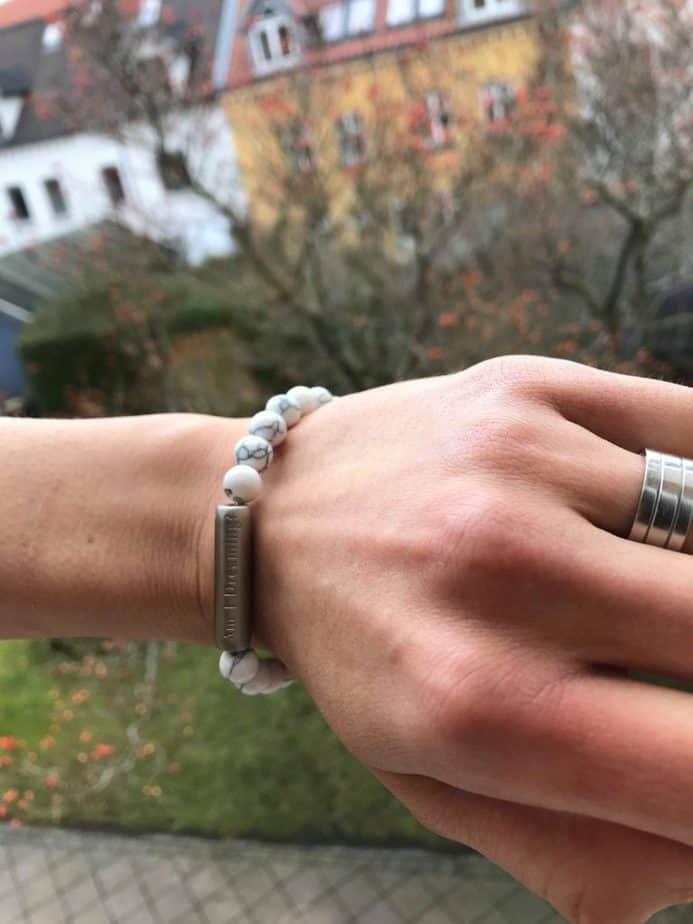

Part 3: Dream affirmations
Now, we start programming your next (lucid) dream!
This is the part, where you have to repeat in your mind (you can do it out loud too) statements that you BELIEVE IN, which will help you to become lucid.
It is something like “programming” your mind with commands that are going to be recalled later on, in your dreams.
WHAT SHOULD YOU DO?
Throughout your day, also when you go to bed, have this specific thought in your head.
Lucid affirmations Ideas:
- “I’ll have a lucid dream tonight”
- “I’ll realize that I am dreaming tonight”
- “Next time when I dream I will become lucid”
- “Next time I’m dreaming, I will remember that I’m dreaming”
Anything similar to this could work.

Part 4: Visualize your dream
This is an essential element of the MILD technique.
In this part, you have to simply visualize and imagine the dream you want to have.
Try to think of as many details as possible.
WHAT SHOULD YOU DO?
- During this step, people often are falling asleep which is okay. You should perform this step in a deeply relaxed mode.
- For example, if you want to fly in your dream – visualize it! It is also pretty easy to visualize yourself in a recent dream.
- Think about the place, the people and the scene that was happening and try to remember as many details as you can.
Do not underestimate this step!
It is really important because it is something like a training for your mind.
By visualizing the scene you want to have, you will prepare your subconscious for the actual lucid dream.
4. Additional tip: Adding a pairing technique from a recent study
Remember the study that I mentioned before?
Now we will add the improvements from this new research.
The team of scientists from the University of Adelaide came up with some interesting tips on how to maximize the chances of inducing a lucid dream.
The present study provides a thorough examination of lucid dream induction techniques — reality testing, MILD, and the third method was:
The results showed (check below for more details) that the combination of these methods was effective at inducing lucid dreams.
Several factors influenced the effectiveness of the MILD technique, including general dream recall and the amount of time taken to fall asleep after finishing the technique.
Now, let’s briefly reminded you how to do WBTB:

Wake-back-to-bed technique:
This method is also simple, you just have to interrupt your sleep with an alarm.
Wake yourself up after 5 hours of sleep. You should bring yourself to full consciousness for a few minutes.
After you wake up, do this:
Repeat in your head your dream affirmations.
Think about lucid dreaming and what you are going to do in inside your lucid dream.
Then, go back to sleep by calming yourself down, and even meditating until you fall asleep.
Reminder: While relaxing, don’t forget about your affirmations!
Tip: if you have trouble waking up during the night, you can move your alarm somewhere far from you, so you would have to go out of the bed to stop it.
I also have a full WBTB guide with more details in THIS article, so if something is not clear, make sure to check it out.

Results from the new study I’ve been mentioning:
Significantly higher compared to a baseline week where they didn’t practise any techniques.“
Conclusion
All in all, easy tasks, like reality checks and writing down your dreams are fundamental and extremely important for lucid dreaming.
They should be the first steps you take, if you want to experience lucid dreaming.
Once you master these, you can explore your dreaming mind!
Even if you decide to use another technique (check more of my favorites here), keep doing reality checks and update your dream diary on a daily basis.










Hello, I can’t fall asleep after doing WBTB! It is so hard! Do you have any suggestions on how to do it? I did it a few times and once I had a great vivid dream but it takes so long to fall back to sleep. Do you have any techniques that might help? Thanks!
Hey Andrew!
Have you tried to meditate? Or to listen to some binaural beats?
I think these 2 practices can help you a lot with falling asleep!
You can even combine them if they won’t work on their own.
Hey! cold set some alarms through out the day to remind myself of doing the realty checks and dream affirmations? Or is that going to mess things up? I’m affraid I’ll forget to do it otherwise is all
Yeah, definitely! It’s a good idea, especially at the beginning. After some time, you will build up a habit so probably you won’t need alarms 🙂
I am a little worried about sleep paralysis, I heard mild is very good since it does not induce sleep paralysis, is this true?
Hello! Yes, the MILD technique shouldn’t involve sleep paralysis.
Sleep paralysis is most common if you feel very stressed, anxious, or sleep-deprived. Don’t be afraid of it though, it is not always scary. 🙂